Dynamics of uniform circular motion
What is circular motion? A body moving along the circumference of the circle with a constant speed is said to be exhibiting a circular motion.
For example, A car moves in a circular track of radius ‘r’ with velocity ‘v’. Then the circumference of the track will be
The natural tendency of the body is to move uniformly along a straight line. There is a requirement for some additional force to move a body along a circle and that force is called centripetal force.
Centripetal force
The direction of centripetal force and acceleration is always towards the center of the circle.
We know that circular motion can be both uniform and non-uniform. If the tangential component of acceleration is absent, it will be uniform circular motion, and if the tangential component of acceleration is present, it will be non-uniform circular motion. In the case of non-uniform circular motion, the net acceleration of the particle is the resultant of radial acceleration and tangential acceleration.
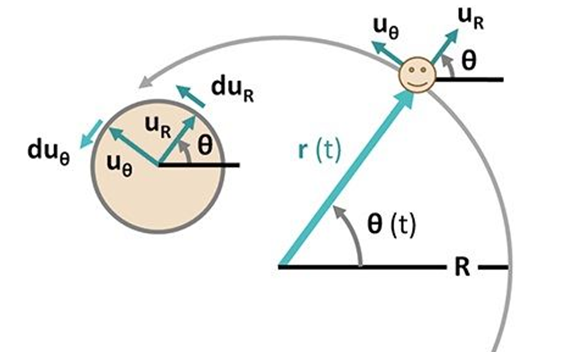
In the case of uniform circular motion, the tangential acceleration is zero so the speed of the object moving along a circular path is constant. There is only centripetal acceleration (negative radial direction) present.
Centripetal force
Suppose you are in an inertial frame of reference and you are observing a particle in a circular motion. The net force on the particle must be non-zero according to the second law of motion since the particle has some acceleration. Let’s take the case of uniform circular motion. The speed of the particle is constant, and the acceleration of the particle towards the center is
If ‘m’ be the mass of the object then centripetal force will be given by
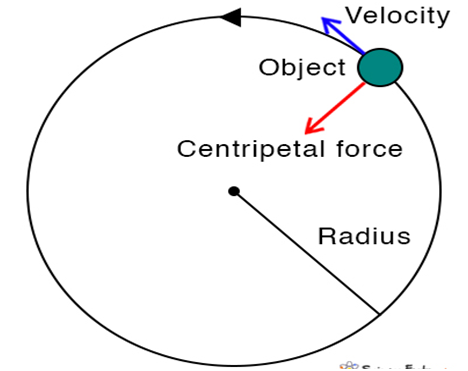
This force is directed towards the center and is therefore known as centripetal force. The centripetal force is required to keep the object in a uniform circular motion. This is just the name given to this type of force and this centripetal force can arise from tension, friction, etc.
Example of circular motion :

When a moving car on the road takes a turn, the motion of the car on the turn is also an example of circular motion
Turn on a level road
When a car takes a turn on a level road, the kinetic friction between the road and the car provides the necessary centripetal force to the car so that it would move in a circular path near the turn.
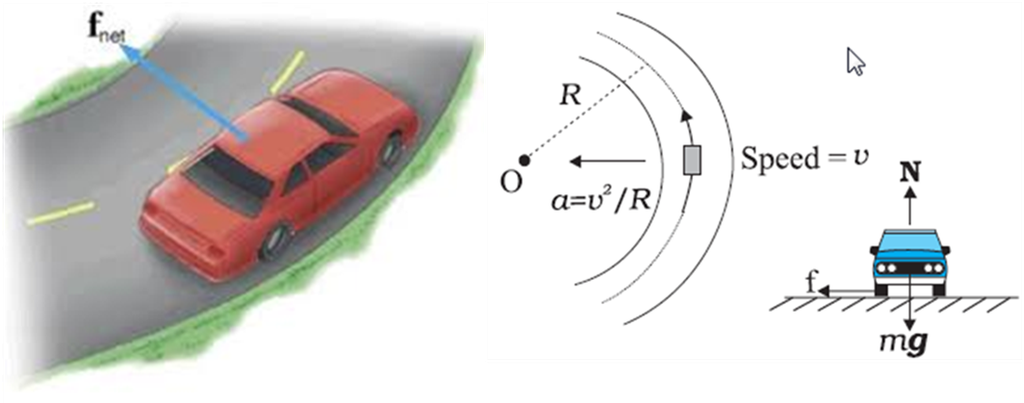
In the figure shown above, we can clearly see that Normal force is balancing the weight of the car on the level road N= mg
And the frictional force is providing the necessary centripetal force. If the speed of the car is such that the required centripetal force exceeds the static friction between the car and the road, then it will no longer be able to move in the circular path. So there is a speed limit to take a safe turn.
Since frictional force provides the centripetal force.
This is the maximum safe velocity of the car in a circular motion in a level rod.
The motion of a car in a circular path on a Banked road
Consider a vehicle of mass m moving with speed v on a banked road of radius R as shown in the diagram. Let θ be the angle of banking. N is the normal reaction exerted on the vehicle by a banked road. Let f be the frictional force between the road and the tires of the vehicle.
In the free body diagram, we can conclude that the vertical component of Normal force ( Ncosθ) balanced weight ( mg ) and fsinθ
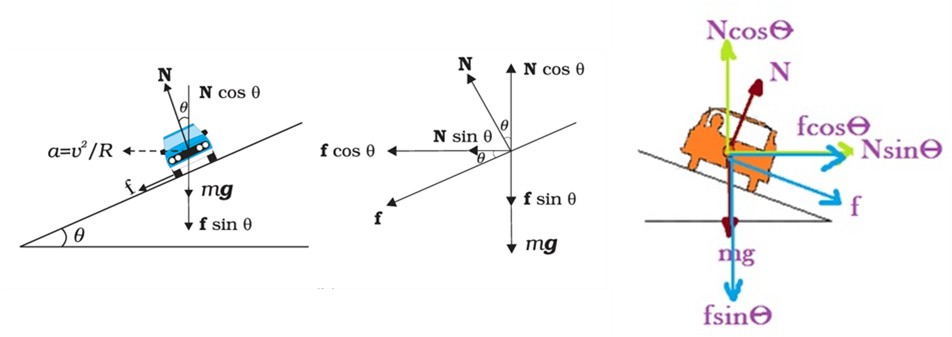
And horizontal component (Nsinθ) and fcosθ provide the necessary centripetal force for the circular motion of a car on a banked road.
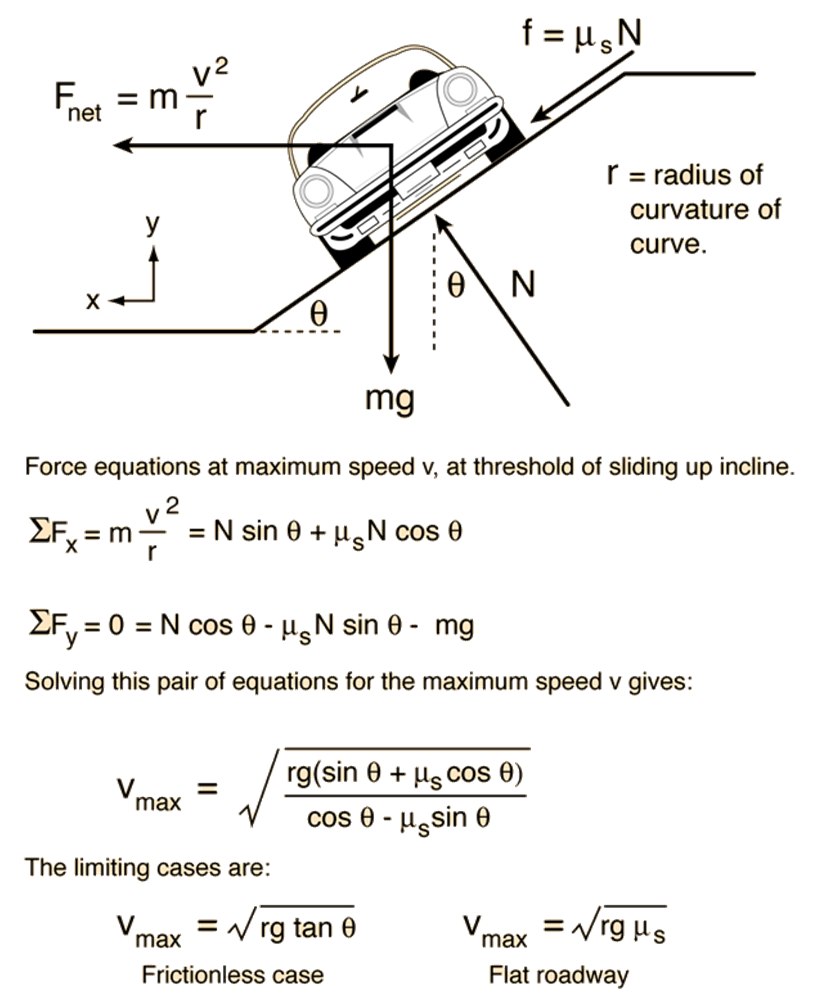

 Madhava Publications
Madhava Publications
